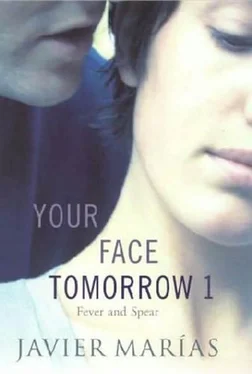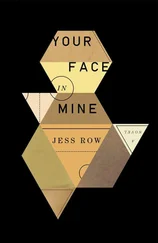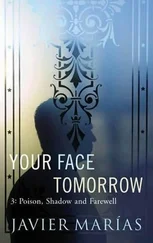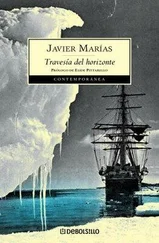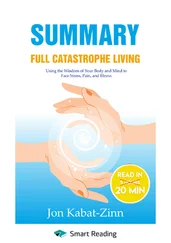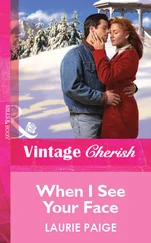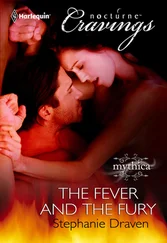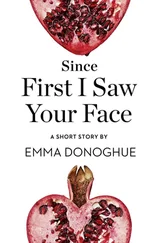I never believed in the existence of that small bureaucratic photograph to which I had heard my parents allude. I mean, I never believed that it had been kept somewhere, put away or preserved by my mother, Elena, who was the one who had found it, or that she had asked the political commissars at the cheka if she could keep it and that they had given it to her, aged twenty-two, the eldest of eight siblings, but still very young. And when I happened upon it, many years after her death, wrapped in an odd little scrap of satin with two broad red stripes flanking another black stripe and placed in a small tin that had once contained almonds from Alcalá de Henares, along with another photo, unwrapped this time, of the same brother when he was still alive, as well as a library card from the Arts Faculty library and various bits of paper from the 1930s all neatly folded to fit (amongst them a naive street poem addressed to Madrid, and crowned by the Republican flag with its purple stripe – the risks my mother had run to preserve it during the eternity of Franco's regime), my first impulse was not to look at it, at the photo, and not to linger over what had caught my eye like a flash or a bloodstain and which I recognised as soon as I removed the cloth, I recognised him at once even though I had never seen him and however far from my memory that remote, fatal episode was at that moment. My first impulse was to cover it up again with the little piece of satin, like someone protecting a living eye from seeing the face of a corpse, and as if I were suddenly aware that one is not responsible for what one sees, but for what one looks at, that the latter can always be avoided – you always have the choice – after the first inevitable glimpse, which is treacherous, involuntary, fleeting, and takes you by surprise, you can close your eyes or immediately cover them with your hands or turn away or choose to pass swiftly on to the next page without pausing ('Turn the page, turn the page, I don't want your horror or your suffering. Turn the page, and then save yourself).
I stopped to think, heart pounding, and I thought that if my mother had asked for that photo of the atrocity and had taken it away with her and preserved it all her life, she had certainly not done so with any unhealthy intent nor in order to keep alive any rancorous feelings that would inevitably have lacked a precise target, because none of that was in keeping with her character. She probably wanted it as a form of confirmation, whenever it seemed to her impossible or merely a dream that her brother Alfonso had died in that wretched way and would not return home from that night, when she had trudged round streets and police stations and chekas, or from any other night. And so that the unreality that always wraps about any permanent loss did not also dominate her night-time imaginings. And perhaps, too, because to leave that photo in the file of administered deaths would have been rather like abandoning to the elements a body she never actually saw and whose final resting-place she never knew, tantamount to failing to give it a decent burial. And as for destroying it later on, I can understand why she didn't do that either, although I am equally convinced that she never looked at it again, and that she probably kept it wrapped in that scrap of red and black cloth so as not to put even herself at risk of seeing it, as a warning or as a dissuasive marker telling her: 'Remember I am here. Remember I still exist, and that this guarantees that I did once exist. Remember that you could see me and that you did see me.' She almost certainly never showed it to others, the photo I mean, at least I don't think so. Certainly not to her parents, not to her delicate and easily frightened mother, overwhelmed by all those children and by the continual demands of her husband, the father, who so much wanted her all to himself that he virtually kidnapped her; and not to him, to that father, as charming as he was authoritarian, who was French in origin, and because of whom my real name is not Jacobo or Jaime or Santiago or Diego or Yago, which are all forms of the same name, but Jacques, which is the French version of the name and by which only she, my mother, ever called me, apart, if I remember rightly, from a few friends in Paris. No, she wouldn't have shown it to them even though she was the one who had to give them the news and tell them of her discovery, nor to her other siblings, all of them younger and more impressionable, the only one who wasn't, the oldest of the boys and the next oldest after her, was in hiding somewhere in the city, constantly moving from house to house in the hope of finding refuge in some neutral or non-aligned embassy. She may have shown it, that photo, to my father, to her inseparable friend and perhaps, who knows, by then also her sweetheart, or maybe he himself found it at the police station and removed it from the file with a shudder and a muttered curse, and he was the one who had had to show it to her, the very last thing he would have wanted to do. For I believe he accompanied her all that night and that day, during her long, anguished and, ultimately, desolate pilgrimage.
Almost the worst thing about the photo are the numbers and labels placed around the neck and on the chest of this boy who was executed having committed no offence, no crime and having had no trial, and who was and wasn't my Uncle Alfonso, but who would have been. There is a 2, and underneath that, 3-20, God knows what those numbers mean, what improvised method was used to classify these unnecessary, nameless dead, so many over the years that no one has ever been able to count them, still less name them, so many throughout the peninsula, north and south and east and west. But, no, that is not the worst, how could it be when there are bloodstains on his young face, the largest on the ear, where it seems the blood may first have spurted forth, but on the nose too and the cheek and the forehead and there are spatters of blood on the closed left eyelid too, it barely looks like the same face as that of the living boy in the other photo not wrapped up in satin, the boy with the tie. The most recognisable features in both photos are the rather prominent front teeth and the left ear from which the dead boy had bled, and which looks just like the ear in the photo of the
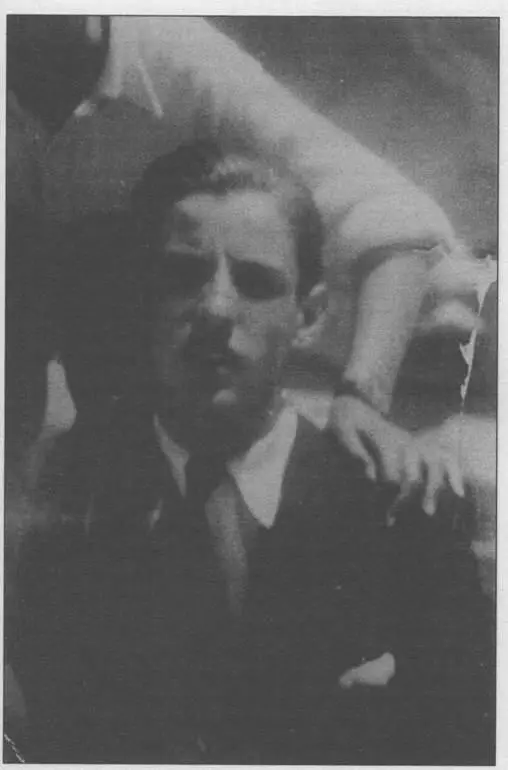
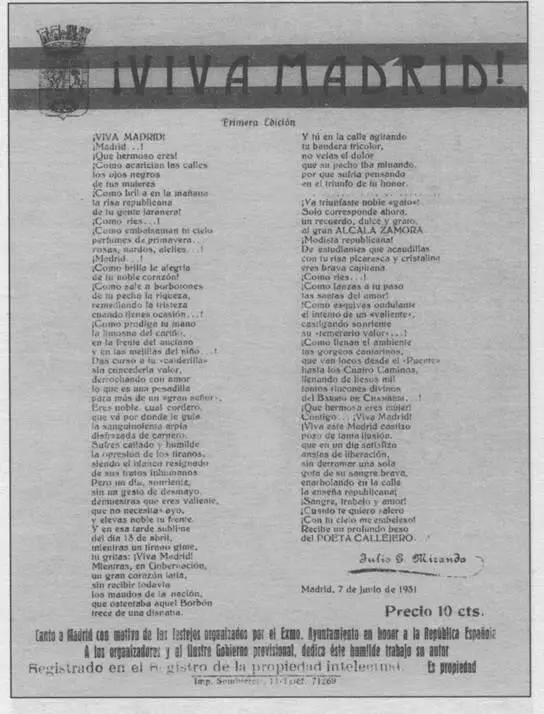
living boy. A friendly hand rests on his shoulder and its owner, whoever he was (his sleeve was rolled up just as mine was then, as I restored order to the study), had leaned forward to pose and to appear in the photo in which he did not, after all, appear, and he was perhaps another brother, the brother of my mother Elena and my uncle Alfonso, the latter, when alive, wore a handkerchief in his top pocket and parted his hair on the left above his widow's peak, in the prevailing fashion of the time which lasted into my childhood, I too wore my hair parted on that side as a child, when my mother still combed our hair with water, me and my two brothers, and my sister too, except that she lavished more care on hers, shorter or longer depending on her age (perhaps that same hand, a sister's hand, had been responsible for combing the living boy's hair too, when he was younger). I had re-wrapped the wrapped-up photo and put it away again after seeing it and not wanting to see it and then looking at it briefly, very briefly, because it is hard to look at it and even harder to resist doing so, I should never have looked at it and I must never show it to anyone else. But there are images that engrave themselves on the mind even if they last only an instant, and so it had been with that photo, so much so that I could draw it precisely from memory, which is what I suddenly did, when I had cleared Wheeler's desk, and everything had been more or less put back in place, thus saving Peter and Mrs Berry any domestic displeasure when they came down in the morning, much earlier, of course, than I would: it must be terribly late, although I still preferred not to know just how late.
Читать дальше
